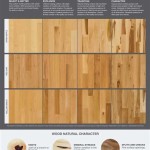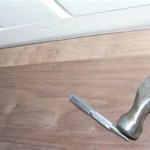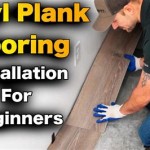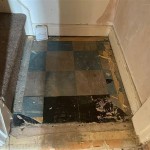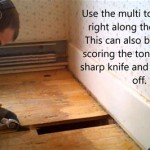Vinyl Hardwood Flooring Roll: A Comprehensive Guide
Vinyl hardwood flooring roll, also known as sheet vinyl flooring with a wood-look design, presents a versatile and cost-effective flooring solution for various residential and commercial applications. Unlike traditional hardwood, vinyl hardwood rolls are manufactured from synthetic materials, primarily polyvinyl chloride (PVC), offering enhanced durability, water resistance, and ease of maintenance. These qualities make them particularly suitable for areas prone to moisture, such as kitchens, bathrooms, and basements, where real hardwood might be susceptible to damage.
This type of flooring is produced in large, continuous sheets, minimizing seams and creating a more visually seamless and aesthetically pleasing appearance that mimics the look of natural wood. The hardwood visuals are achieved through high-resolution printing technology, which replicates the grain patterns, textures, and color variations found in various wood species, including oak, maple, and hickory. A protective wear layer is applied to the surface to resist scratches, stains, and fading, extending the lifespan of the floor and preserving its appearance.
The installation of vinyl hardwood flooring roll typically involves adhering the sheet to a clean, level subfloor using an appropriate adhesive. Proper subfloor preparation is crucial to ensure a smooth and even surface, preventing imperfections from telegraphing through the vinyl. While professional installation is often recommended, skilled DIYers can successfully install vinyl hardwood rolls with the right tools and techniques.
Understanding the Benefits of Vinyl Hardwood Roll Flooring
Vinyl hardwood roll flooring offers a plethora of advantages that make it a popular choice for homeowners and businesses alike. Its inherent properties contribute to its widespread use and appeal.
One of the primary benefits is its exceptional water resistance. Unlike natural hardwood, which can warp, swell, or rot when exposed to moisture, vinyl hardwood rolls are impervious to water damage. This makes them an ideal flooring option for bathrooms, kitchens, laundry rooms, and basements, where spills and humidity are common. The continuous, seam-reduced surface further minimizes the risk of water penetration, preventing mold and mildew growth underneath the flooring.
Another significant advantage is its durability and resistance to wear and tear. The protective wear layer on the surface of vinyl hardwood rolls shields the flooring from scratches, dents, and stains caused by everyday foot traffic, furniture movement, and accidental spills. This resilience makes it a suitable choice for high-traffic areas in homes and commercial spaces. The thickness of the wear layer is a key indicator of the flooring's durability, with thicker wear layers offering greater protection and longevity.
Furthermore, vinyl hardwood roll flooring is relatively easy to maintain. Regular sweeping or vacuuming is sufficient to remove dust and debris, while occasional damp mopping with a mild detergent can easily clean spills and stains. Unlike hardwood, vinyl does not require waxing, polishing, or refinishing, reducing the long-term maintenance costs and effort associated with flooring upkeep.
Installation Techniques and Considerations
The successful installation of vinyl hardwood roll flooring relies heavily on proper preparation and adherence to best practices. A flawless installation ensures not only the aesthetic appeal of the flooring but also its long-term performance and durability.
Subfloor preparation is paramount. The subfloor must be clean, dry, level, and free from any imperfections, such as cracks, holes, or uneven surfaces. Any existing flooring, such as carpet or tile, must be removed. If the subfloor is concrete, it should be properly sealed to prevent moisture from seeping through. Any imperfections should be filled with a leveling compound to create a smooth and uniform surface. A clean and level subfloor is essential for preventing the vinyl from conforming to imperfections beneath it, leading to an uneven appearance and potential damage over time.
Once the subfloor is prepared, the vinyl hardwood roll should be unrolled and allowed to acclimate to the room temperature for at least 24 to 48 hours. This acclimation period allows the vinyl to expand or contract, minimizing the risk of buckling or warping after installation. It is crucial to follow the manufacturer's recommendations for acclimation, as the specific requirements may vary depending on the product and the climate.
When applying the adhesive, it is essential to use the type recommended by the vinyl flooring manufacturer. The adhesive should be applied evenly across the subfloor using a notched trowel, ensuring proper bonding between the vinyl and the subfloor. The vinyl sheet should be carefully positioned and smoothed out to eliminate any air pockets or wrinkles. A floor roller or hand roller can be used to press the vinyl firmly onto the adhesive, ensuring a secure and uniform bond. Overlap the sheet edges by 2-3 inches and after the adhesive has set, make a double cut through both the overlapped layer and remove the excess. Use a seam sealer to protect the seam.
Comparing Vinyl Hardwood Roll to Alternative Flooring Options
When considering flooring options, it is important to evaluate the pros and cons of each material in relation to specific needs and priorities. Vinyl hardwood roll offers a distinct set of advantages and disadvantages when compared to other popular flooring choices, such as hardwood, laminate, and tile.
Compared to real hardwood, vinyl hardwood roll presents a more affordable and practical alternative, especially in areas prone to moisture. While hardwood offers the natural beauty and warmth of wood, it is susceptible to water damage, scratches, and dents. Vinyl hardwood roll, on the other hand, is water-resistant, durable, and easier to maintain, making it a more suitable choice for bathrooms, kitchens, and basements. Furthermore, vinyl hardwood roll is typically less expensive to install than hardwood, reducing the overall cost of the flooring project.
Laminate flooring is another popular alternative to hardwood, offering a similar wood-look appearance at a lower price point. However, laminate is generally less water-resistant than vinyl hardwood roll, making it less suitable for areas with high moisture levels. While some laminate products are water-resistant, they are not fully waterproof, and prolonged exposure to moisture can cause them to warp or swell. Vinyl hardwood roll, with its inherent water resistance, provides greater peace of mind in moisture-prone environments.
Compared to tile flooring, vinyl hardwood roll offers a softer and warmer underfoot feel. Tile is known for its durability and water resistance, making it an excellent choice for bathrooms and kitchens. However, tile can be cold and hard, which may not be as comfortable as vinyl, especially in living areas or bedrooms. Vinyl hardwood roll provides a more cushioned and comfortable surface, reducing fatigue and providing a more pleasant walking experience.
Ultimately the choice between vinyl hardwood roll and other flooring options will depend on individual preferences, budget, and the specific requirements of the space. Considering the pros and cons of each material, alongside these factors, will aid in selecting the best flooring choice for the given application.
The availability of vinyl hardwood roll extends to a wide range of colors, textures, and patterns. This allows consumers to select a product that aligns seamlessly with their design preferences. The versatility of these offerings makes it suitable for numerous applications and interior design schemes.
It is important to note the differences in quality and construction methods of different vinyl hardwood roll products. Thicker materials with enhanced wear layers will provide a firmer feel under foot, and will offer greater protection against scratches, dents, and tears. Reading the installation instructions carefully is also important in ensuring a lasting flooring application.
Vinyl Sheet Flooring For Homes Tarkett Emea

Vinyl Floor Rolls Pvc Plastic Linoleum Flooring Roll With Competitive China Wood Made In Com

Vinyl Sheet Vs Planks Jupps Floor Coverings
Diffe Types Of Vinyl Flooring Tarkett Commercial

Roll Vinyl Floor Swedish Medium Oak 2m And 4m Authentic Wood Look

Vinyl Flooring Roll 23 6x 118 19 Sq Ft Wood Grain Self Adhesive Floor

Style Selections Providence Oak 10 Mil X 12 Ft W Waterproof Cut To Length Vinyl Sheet Flooring In The Department At Com

Lonwood Medera Commercial Sheet Vinyl Flooring

Linoleum Flooring Pros And Cons Forbes Home

Vinyl Flooring Planks In Delhi 1mm 2mm Gymtex Fitness Solutions
Related Posts

